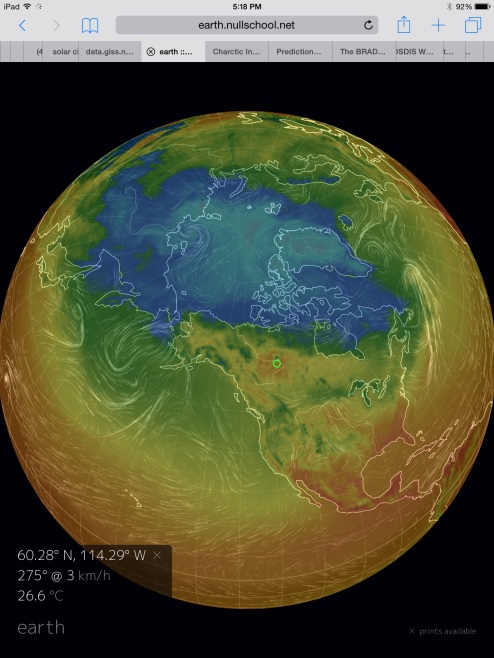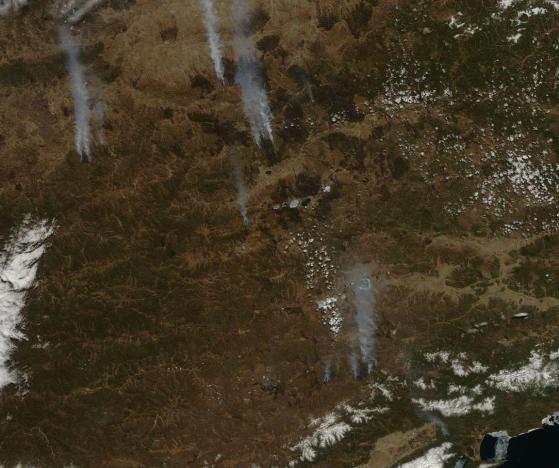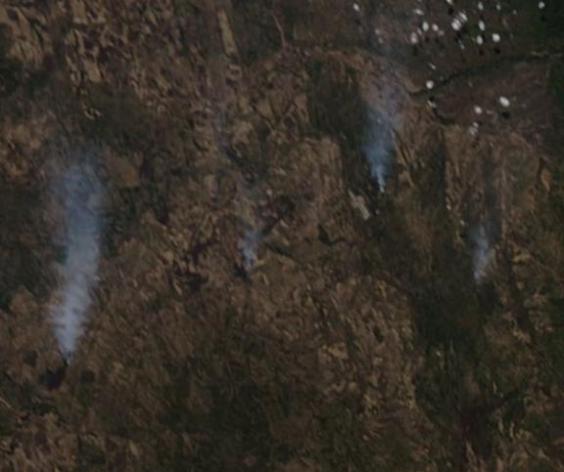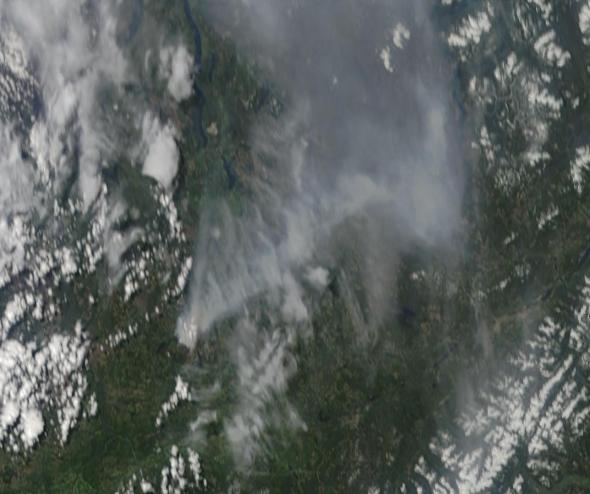From Siberia to British Columbia Arctic Wildfires Begin an Ominous Ignition
14
May, 2015
It’s
abnormally warm today near Great Slave Lake, Northwest Territory. And
the smell of smoke from massive fires to the west lingers in the air.
Temperatures
there yesterday afternoon read 80 degrees Fahrenheit. Where I sat
typing this blog in Gaithersburg, Maryland, it was a somewhat cooler
67. A north-south temperature flip-flop that has become
all-too-common in recent years. A warming in the Arctic that sets the
stage for gargantuan summer wildfires burning through some of the
world’s greatest carbon stores. Vast and thawing permafrost
deposits stretching in a great arc from Siberia through Alaska and on
into Northern Canada. Immense loads of fuel for a newly forming ring
of fire that is now an entirely human invention.
(It
was pretty darn hot near Great Slave Lake, NWT territory Wednesday.
80 degree readings in a polar region that, on average, should be in
the mid 40s as a daily high for May 13. Image source: Earth
Nullschool.)
Now,
fires are starting to flare around this broad stretch of once-frozen
lands rapidly warmed by an unprecedented belching of heat-trapping
gasses into the Earth’s atmosphere. Though the fires are not yet
widespread, many are rather large — erupting over a smattering of
areas. It is not typical for large fires of this kind to appear at
all in May. Nor is it usual to find them in regions girding the
Arctic at this time.
Lake
Baikal Fires Still Burn
The
first set of blazes ignited during mid April of 2015 through a
permafrost zone in the Lake Baikal region of Russia. Though the fires
appear to have backed off from the towns and settlements they
threatened at that time, they have continued to burn unabated —
fading and flaring more than most of the past month.
(In
the above MODIS satellite shot from NASA we see numerous fires still
burning near Lake Baikal in Russia. Note the multiple dark burn scars
covering vast stretches of land near upper center frame. For
reference, the larger, still burning fires in this shot range from
about 3-8 miles wide. Image source: LANCE-MODIS.)
As
the more southerly fires continued to burn through thawing permafrost
zones, blazes began to erupt further and further north. As of this
week, the fires have marched to the shores of Lake Baikal itself,
scorching their black scars in the Earth like some great fire giant’s
footprints.
Wildfires
in Central Siberia
Leaping
over Lake Baikal and moving north and westward we come to the great
open spaces of Siberia. Here, in recent years, vast fires have burned
through grass, forest and permafrost alike. Few settlements dot the
wide expanses. So fire suppression efforts have only rallied when
towns and cities were threatened. Meanwhile, the once frozen regions
all about have increasingly caught fire. Turning the place into a
land of summer flame.
By
Wednesday, a quartet of significant fires had erupted along a hilly
region in Central Siberia. Tuesday, there was but a single blaze. Now
four rage across a region that has felt an extraordinary warming not
only this year, but for a long succession of years now stretching on
for many decades.
Beyond
these newly emerging fires, we begin a pass over the wide open plains
of Siberia. There we note a tell-tale whiff of smoke or three. But no
large burn points are visible in the moderate resolution satellite
shot. Continuing on to just south of Yamal, Russia where the odd
methane blow holes first appeared last summer we find a region still
mostly frozen. But thaw is predicted to come quickly — coincident
with a rapid warm up forecast for the next week.
Norman
Lake Fires British Columbia
Shifting
still westward we cross over Northern Europe, the Atlantic, a thawing
Hudson Bay and return to where we started our narrative in Northwest
Territory Canada. To near 80 degree Fahrenheit temperatures at Great
Slave Lake. And to a thick cloud of smoke issuing up from the nearby
valleys of Northern British Columbia.
There,
near Prince George, at Norman Lake, a massive wildfire erupted
earlier this week. Unable to contain it, more than 100 firefighters
and numerous helicopter and heavy equipment crews quickly found
themselves fighting a defensive battle against a rapidly expanding
blaze. By this morning, the Norman Lake fire had more than quadrupled
to 80 square kilometers in size. Indications from the above satellite
shot are that the fire is still growing.
The
massive blaze forced two regional districts to issue evacuation
orders or alerts and more than 80 people to evacuate residences.
Meanwhile, B.C. has closed its Dahl Lake and Bobtail Mountain
provincial parks until further notice.
Conditions
in Context
For
wide stretches of the Arctic, especially in Central Siberia and
Western Canada, winter heat and early spring melt are contributing to
a very high risk of wildfires. In addition, the decadal warming
forced by human-caused climate change is thawing ever greater
portions of permafrost, which also adds near surface fuels to
traditional brush and woodlands fires.
The
early and intense fires we are seeing now represent just the
beginning of what is likely to be an extreme fire event for these
regions. At this point, we are looking at a worsening fire potential
stretching from now through mid September for these vulnerable Arctic
zones.
Links:
B.C. wildfire continues to spread, prompts evacuations
A
massive wildfire approximately 70 kilometres southwest of Prince
George, B.C. continues to burn, forcing the evacuation of 80 people
and putting nearly 700 homes in danger.
The
Little Bobtail Lake fire grew significantly between Tuesday and
Wednesday afternoon, destroying nearly 8,000 hectares of land.
Officials
estimate about 13,000 hectares have been burned so far.









How to those fires start if there are no people around to start them? Do they have lightening in those regions?
ReplyDelete